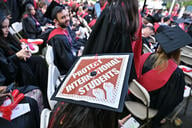You have /5 articles left.
Sign up for a free account or log in.
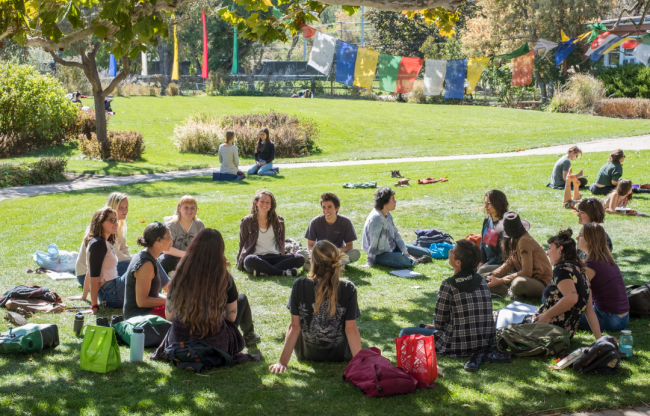
Students at Naropa University learn Eastern wisdom studies and mindfulness as well as Western scholarship. Ann Marie Klotz, vice president of development, enrollment and student success, discusses her role at the Colorado institution.
Sofia Dro/Naropa University
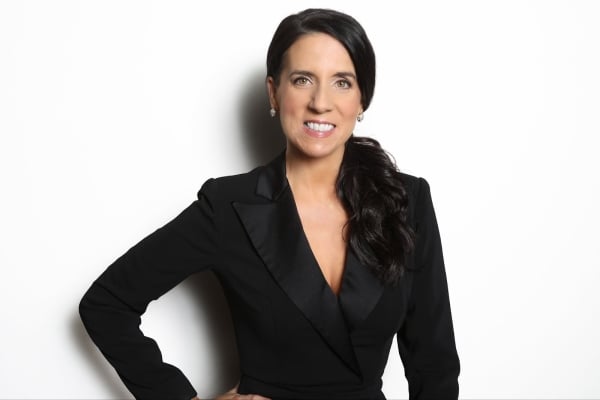
Ann Marie Klotz, vice president of development, enrollment and student success at Naropa University
Naropa University
Naropa University in Boulder, Colo., is not your typical residential college. Founded on contemplative education, the institution pairs Eastern wisdom studies and mindfulness with traditional Western scholarship. Beyond the curricular experience, the small college is growing, hitting record-high enrollment numbers as it expands online learning opportunities for adults.
As vice president for development, enrollment and student success, Ann Marie Klotz is responsible for the entire life cycle of the student experience—from admissions and enrollment to alumni status. Klotz is based primarily in New York, working previously for the N.Y.C.-based university the New School, and she leads a hybrid team in supporting residential and online student success.
Klotz spoke with Inside Higher Ed about her experiences leading from afar, establishing a unified team vision and Naropa’s vision for transfer student success.
Q: Naropa is interesting in that it has such a high transfer population. Why is that and how does that impact the institution’s culture?
A: I think what’s really exciting is that, of all of our incoming undergrad students who came to join us this September, 78 percent are transfer. That is a little bit of our niche; we are, I believe, the destination for high-credit transfer students.
One of the things that I always say to the students is, we might not be where you started your collegiate experience, but we’re so proud to be the place where you’ll finish. When I think through what that means for students, we might be the second, third or fourth stop on their journey. But what I see when I go to graduation is people who found their people and their community. We’re able to share, “Here’s all the supports and things that we can offer to make this a good spot for you. The average age of our students is like 29 to 34 [years old]. A lot of times they’ve had a whole career or two before coming to us, and they can actually really enhance the quality of the classroom experience, because they’re helping to teach along with the professor themselves.
Q: How does the transfer life cycle differ from the traditional college-age student and how does that impact your work?
A: One of the things that we think about is, what do they need right from the jump? And to me, what that’s usually about is decisions, access and money, which is just a very easy way to say, how do we make it as easy as possible for transfer students to come here? How do we make it as quick as possible for students to come here? And how do we offer them the opportunity via scholarships, and things like that?
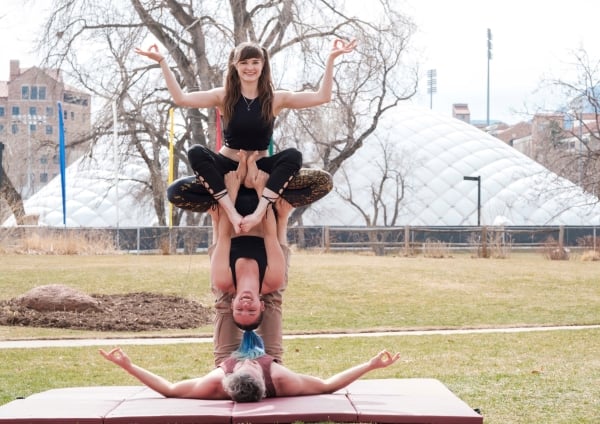
Three Naropa University students practice AcroYoga on the Arapahoe Green on the Boulder campus. Students can earn a Bachelor of Arts in Yoga Studies, part of the unique curriculum offerings at the institution.
Sofia Dro/Naropa University
We have what we call the transfer guarantee, which basically says that, if you have more than 12 credits post–high school and a GPA of 2.0, here’s what we’ll do for you: we’ll give you a $5,000 transfer scholarship; we’ll do a campus visit tailored to your needs. We don’t have hidden fees; we’re able to register you very quickly with someone who understands that you’re not just a first-time freshman. We’ll also help you think through what kind of housing options you might want. We have a bus pass that you get so you can navigate life in Boulder, if you’re new to here.
What it’s about is that, for whatever reason, life has not allowed them, or they have chosen to not, continue at their current place … How do we make their time with us, however brief, really, really memorable? I watched this woman graduate this year with one kid on a hip and holding a little one. And she was like, “I couldn’t have gotten here if it wasn’t for the faculty who were like, ‘There is nothing that’s going to stop us from helping you’.”
Q: When it comes to retaining students who might be on their third or fourth institution, what sets Naropa apart? And what are those key factors that students are looking for?
A: You don’t find us by accident. You find us because you were looking for something a little different. Otherwise, you could have very easily gone to a state school. I think what people are looking for is real community, or, as I always jokingly say, they want to find the people that are going to be on their holiday card list forever, or who might stand up in their wedding … We always say, “You’re getting skills for life, and you’re meeting the community that may stay with you for the rest of your life.”
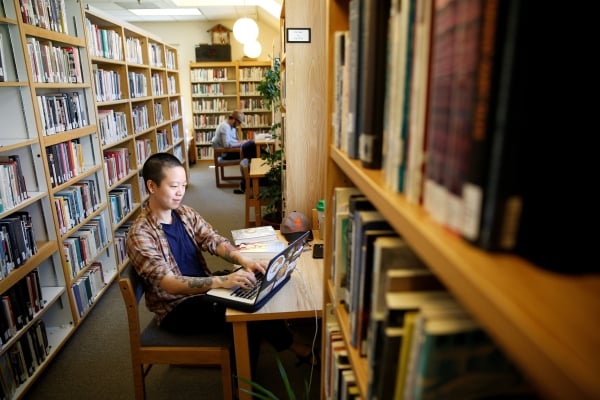
Three out of four incoming students at Naropa University this fall are transfer students, and the average age of the student population is 29 to 34 years old.
Naropa University
I just got back from Seattle doing a fundraising event … and there are people who have graduated from Naropa in the ’80s, and they cannot stop talking about how meaningful that experience was to them, in the same way that some of our students talk about going to an impactful live concert that happened last week. You can feel it from them, and in ways that are really potent and powerful.
Q: You get to lead alumni relations and enrollment. How does that impact your job? How do you think that adds to the perspective of what you’re doing when it comes to present student work?
A: This might kind of sound like a silly example. But it’s the thing I think about all the time. So when I lived in Detroit growing up, I went to this private school … I remember when I came in as a kindergartner, and it’s a K-8 school, and I met the teachers in the eighth grade. And they said, “In eight years, you’ll be with us. And I’ll be teaching you.”
And I remember at 5 being like, cool. But actually, at 13, that is exactly what happened. Those teachers looked out for me the whole time. And by the time I got there, they already knew who I was.
I think about this from this way: our admissions counselors are meeting them on the front end. And then unlike most schools, where the relationship ends once they’ve successfully deposited, I say to my team, “We’re all on the same team.” So if we’re all on the same team, I have enrollment, retention and alumni relations, then the relationship doesn’t stop.
One month after all of the deposits happen, our admissions counselors are reaching out to everybody: How’s it going? How can I help you? What do you need? We know the research indicates that if a student is strongly connected with a faculty or staff member in the first six weeks, they have a much higher opportunity to stay. And we want them to have lots of people who they feel strongly connected with. So what’s really cool is that our admissions counselors work with these students or work with these transfer students [and] come in, know their whole story, connect with them throughout their experience and are wildly cheering for them at graduation. So to me, when I think about what my role really is, it’s to create raving fans of Naropa University, and how we do that at every juncture of the student experience.
Q: How does your division break down silos in communication across departments or offices?
A: This is the most incredible team I’ve ever worked with. We just had our retreat last month, and when people are sharing reports and things that they’ve been doing, I’m watching the academic advisers, learn from our counselors, learn from the folks in housing, and I read the evaluations after the retreat, and they all had some form of, like, “I feel so connected. I feel like I know what other departments are doing. I feel like I know who I have to reach out if I have an issue.”
So when we talk about wraparound support, we’ve increased enrollment by nearly 30 percent in the three years since we started this model. With my team, we’ve increased retention over 8 percent. And that’s no accident. But when I started in 2020, I said, “We’re going to build a system to get there. We’re gonna go from a school of 850 to getting back over the 1,000-student hump,” and now we’re over 1,100 … The only way we can do that is it’s not going to be a single department’s quest.
When I think about silos, it’s not like they don’t exist in some forms at the university. But what I will say is that this large division has largely eroded a lot of those, because we’re all on the same team, and I see it even more. When I see teams submit their budget requests, I chuckle because there are so many requests across the board for departments, which is generally pretty unheard-of, I think, because they recognize that their success is all intertwined. So yeah, I feel really good about what we’re doing. But more importantly, we’re seeing the results in the numbers, and that’s the most gratifying part.
Q: What are the metrics of success you look for in the short and long term?
A: We created a three-year plan on what we wanted to do for enrollment and retention, and I’m really blessed to say that, through the total team effort, we’ve hit those metrics.
The next big piece that’s coming up is starting in the summer, and Naropa will be entering its 50th year. We are a school that began as a small experiment in 1974 and 50 years later are going strong, and that’s no small feat … We’re in this process of discernment right now of figuring out what that next set of metrics are going to be.
One thing that we did really successfully that will impact our future metrics is that, like most schools, we had to pivot to online. And unlike most schools, we never stopped. About a third of my staff is fully remote; many are hybrid. I do not live in Colorado, but I’m there anywhere between five and 10 days a month, depending on what my team needs, what my president needs.
We said, “How can we take the best lessons that we’ve learned in the pandemic and keep applying them to higher ed?” The result of that has been an incredibly robust and diverse student, faculty and staff population in age and experience and culture and all of those things. So as we think about the future, these are metrics that we wouldn’t have thought of years ago, but now we’re over 40 percent online, we would have been nearly zero percent online before. There’s a lot of people who want the Naropa experience that, for a variety of reasons, cannot be Boulder-based. We’ve really taken the message of Naropa and we’ve been able to spread that out throughout the country.
Q: How do you, as an administrator, keep a pulse on campus and student life when your students are remote, hybrid or in an area that you’re not living in?
A: It’s how we build and design the team. So when I came in, I was overseeing Student Affairs, but then I quickly grew to this role of overseeing enrollment and eventually development. Even though I feel very connected to the university, I knew that I needed a great person on the ground in an everyday spot. Jeremy Moore, who we hired to be our dean of students … was working at CU Boulder next door.
Secondly, we put our remote employees primarily working with remote students. And that’s been a beautiful thing. We have academic advisers who are in the same time zones as some of the students that they’re helping. And so, it could be too early Colorado time, but the time that a student needs to meet is East Coast time, and we’ve got advisers out there that can help. In that way, it’s been really helpful. Another example I’ll give is we have a Title IX coordinator who is based in Hawaii. She comes to campus to do trainings once a year. But what we found is two things. One, students love that they don’t have to go into an office and be seen going into a Title IX office. And No. 2, because of the time zones, she offers a bunch of appointments on Saturdays, and I’ve told you the age of our students—many of them are working full-time. So to have Saturday opportunities to connect with staff is huge. While certainly there are still learning curves and things we can be doing differently, I feel really good that we have set up a system of support that reflects the modality of the way that students are learning.
Seeking stories from campus leaders, faculty members and staff for our Student Success focus. Share here.




